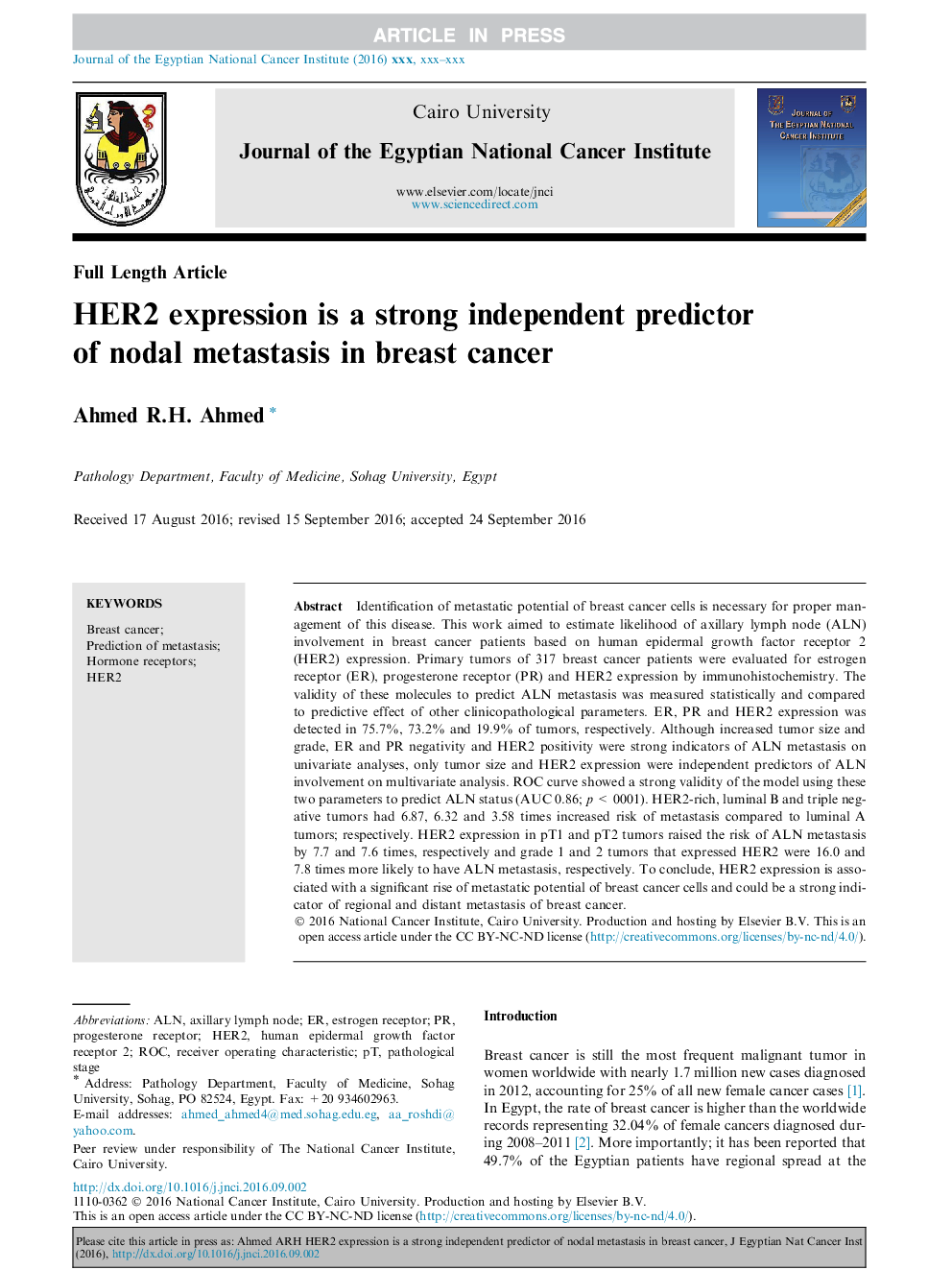| Article ID | Journal | Published Year | Pages | File Type |
|---|---|---|---|---|
| 8787508 | Journal of the Egyptian National Cancer Institute | 2016 | 9 Pages |
Abstract
Identification of metastatic potential of breast cancer cells is necessary for proper management of this disease. This work aimed to estimate likelihood of axillary lymph node (ALN) involvement in breast cancer patients based on human epidermal growth factor receptor 2 (HER2) expression. Primary tumors of 317 breast cancer patients were evaluated for estrogen receptor (ER), progesterone receptor (PR) and HER2 expression by immunohistochemistry. The validity of these molecules to predict ALN metastasis was measured statistically and compared to predictive effect of other clinicopathological parameters. ER, PR and HER2 expression was detected in 75.7%, 73.2% and 19.9% of tumors, respectively. Although increased tumor size and grade, ER and PR negativity and HER2 positivity were strong indicators of ALN metastasis on univariate analyses, only tumor size and HER2 expression were independent predictors of ALN involvement on multivariate analysis. ROC curve showed a strong validity of the model using these two parameters to predict ALN status (AUC 0.86; p < 0001). HER2-rich, luminal B and triple negative tumors had 6.87, 6.32 and 3.58 times increased risk of metastasis compared to luminal A tumors; respectively. HER2 expression in pT1 and pT2 tumors raised the risk of ALN metastasis by 7.7 and 7.6 times, respectively and grade 1 and 2 tumors that expressed HER2 were 16.0 and 7.8 times more likely to have ALN metastasis, respectively. To conclude, HER2 expression is associated with a significant rise of metastatic potential of breast cancer cells and could be a strong indicator of regional and distant metastasis of breast cancer.
Keywords
Related Topics
Health Sciences
Medicine and Dentistry
Oncology
Authors
Ahmed R.H. Ahmed,
